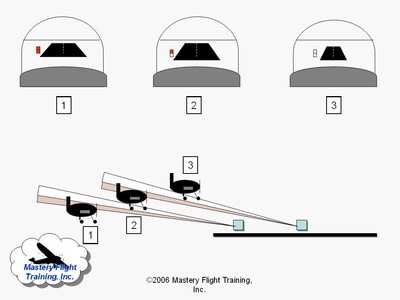Aero-Tips!
A good pilot is always learning -- how many times have you heard
this old standard throughout your flying career? There is no truer
statement in all of flying (well, with the possible exception of
"there are no old, bold pilots.") It's part of what makes aviation
so exciting for all of us... just when you think you've seen it
all, along comes a scenario you've never imagined.

Aero-News has called upon the expertise of Thomas P. Turner,
master CFI and all-around-good-guy, to bring our readers -- and us
-- daily tips to improve our skills as aviators, and as
representatives of the flying community. Some of them, you may have
heard before... but for each of us, there will also be something we
might never have considered before, or something that didn't
"stick" the way it should have the first time we memorized it for
the practical test.
It is our unabashed goal that "Aero-Tips" will help our readers
become better, safer pilots -- as well as introducing our
ground-bound readers to the concepts and principles that keep those
strange aluminum-and-composite contraptions in the air... and allow
them to soar magnificently through it.
Look for our daily Aero-Tips segments, coming each day to you
through the Aero-News Network. Suggestions for future Aero-Tips are
always welcome, as are additions or discussion of each day's tips.
Remember... when it comes to being better pilots, we're all in this
together.
Aero-Tips 06.03.06
After recent Aero-tips articles on two-bar and three-bar Visual Approach
Slope Indicators, or VASIs, a couple readers wrote to say they had
trouble visualizing why "red over white" is the proper visual
indication when on glide path.
Look at the figure below (click on the image to see a larger
version). Each VASI consists of a pair of runway-side boxes that
radiate two visual glidepaths—one red, the other white.
The white beam is focused at a slightly higher angle, the red
slightly lower.
Note: For purposes of this discussion I'm
describing the two-bar VASI system. A three-bar includes yet
another box and another pair of radiated glidepaths.
The far box lights are actually angled slightly steeper than the
optimal glide path. The nearer box lights are angled slightly
shallower. (This is why you can't accurately fly a "single-bar
VASI" if one or the other light boxes is inoperative).
The beams are adjusted like this so that if you're viewing from
the "proper" position you'll see red from the far box -- because
you're below that box's red/white dividing line, below the "high"
glidepath. You'll see white from the near box because you're above
the "low" glidepath. The result is "red over white", which is
"right" for flying the visual approach slope to the runway.

- Position 1 (in the figure) shows approaching too low on the
glidepath.
- Position 2 is the indication for "on glidepath" with this
VASI.
- Position 3 indicates flying too high on the VASI
glidepath.
Aero-tip of the day: Visualize why you
see the expected VASI glidepath indication to fly safely to the
runway.
 Klyde Morris (05.02.25)
Klyde Morris (05.02.25) Classic Aero-TV: Introducing The MD302--Mid-Continent's Standby Attitude Module
Classic Aero-TV: Introducing The MD302--Mid-Continent's Standby Attitude Module ANN's Daily Aero-Linx (05.04.25)
ANN's Daily Aero-Linx (05.04.25) ANN's Daily Aero-Term (05.04.25): Jamming
ANN's Daily Aero-Term (05.04.25): Jamming Aero-News: Quote of the Day (05.04.25)
Aero-News: Quote of the Day (05.04.25)




